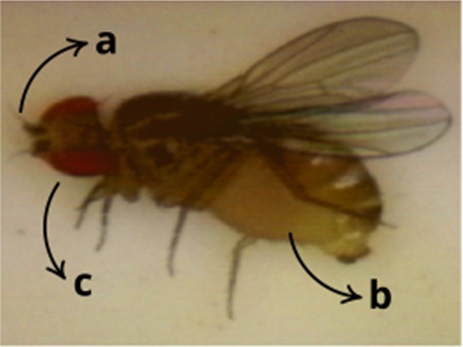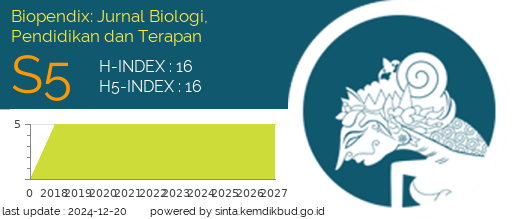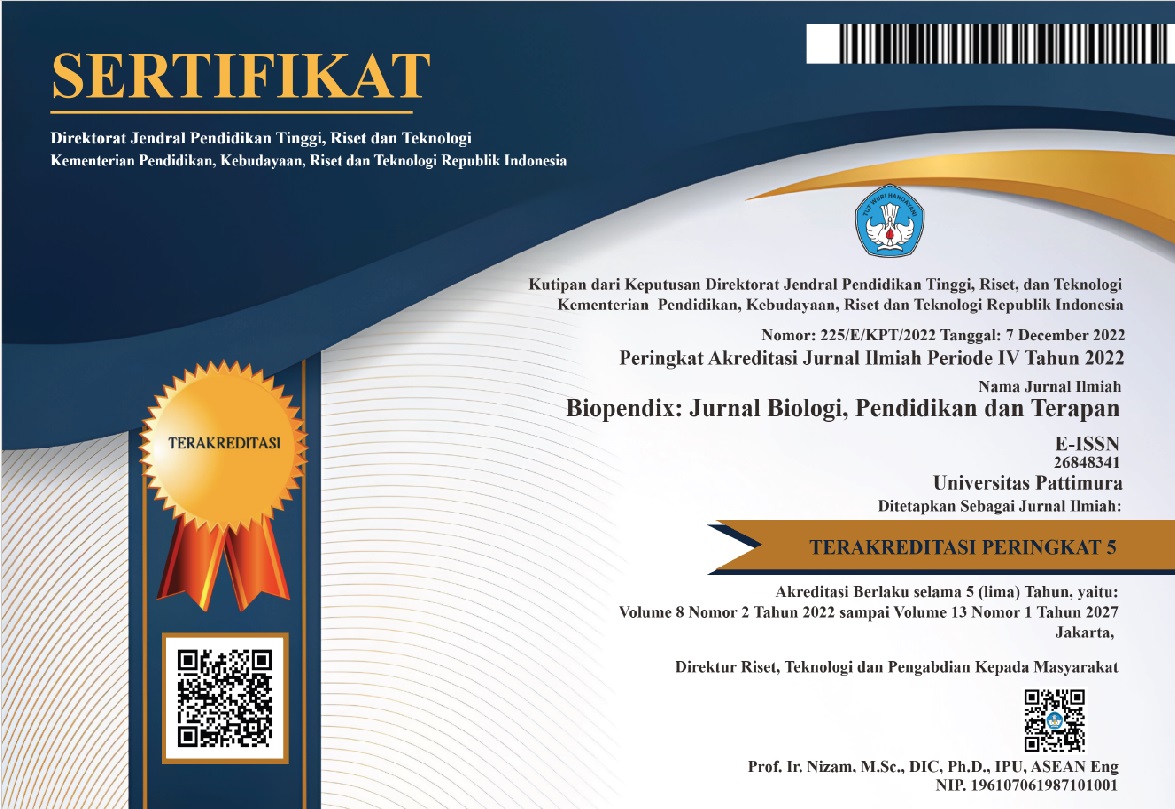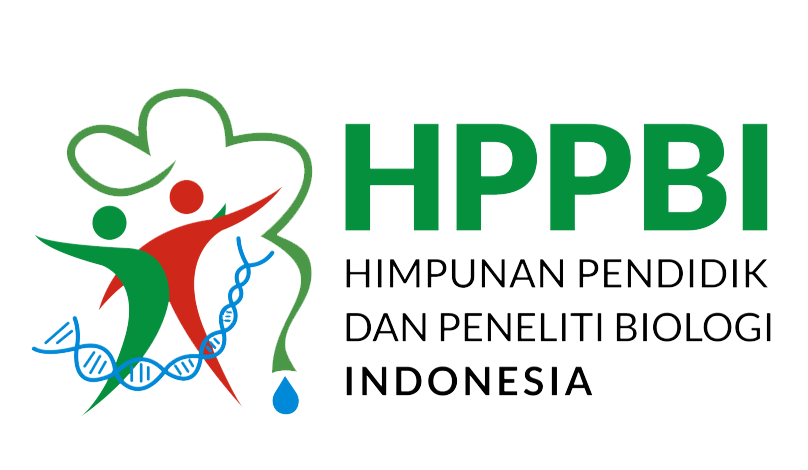IDENTIFIKASI SPESIES LALAT BUAH DENGAN MEDIA BUAH PEPAYA DAN BUAH MANGGA DI KENALI ASAM, JAMBI
Abstract
Background: This research was conducted with the aim of observing and obtaining information about fruit fly species in the home area of Kenali Asam, Jambi.
Methods: Research was carried out using experimental methods and a microscope. The trapping medium uses mango and papaya that have been left to rot. Put the two types of fruit in a container and wait for the fruit flies to get inside.
Results: The results of the study show that there is diversity in fruit fly species in the home area of Kenali Asam, Jambi.
Conclusion: This research emphasizes the importance of understanding how to make fruit fly stock media (rejuvenation media) that is appropriate and remains hygienic. This research also requires further studies to explore factors that can influence the development of fruit flies and their distribution in various environments
Downloads
References
Ansiga, S. E., Sumampouw, H. M., & Mokosuli, Y. S. (2024). Penerapan Pembelajaran Praktikum Genetika Menggunakan Lalat Buah (Drosophila melanogaster) Isolat Lokal Berbasis Whatsapp di Daerah Terdepan, Terluar, dan Tertinggal (3T) SMA NI Kabaruan. JSPB BIOEDUSAINS, 5(1), 22-32.
Arrijani, A. (2003). Phenetic relationship of Genus Knema, Horsfieldia, and Myristica in Java based on pollen morphological evidence. Biodiversitas Journal of Biological Diversity, 4(2).
Ashburner, M., Golic, K. G., & Hawley, R. S. (2005). Drosophila: A Laboratory Handbook. Cold Spring Harbor Laboratory Press.
Baldi, R., Cheli, G., Udrizar Sauthier, D. E., Gatto, A., Pazos, G. E., & Avila, L. J. (2017). Animal diversity, distribution and conservation. Late Cenozoic of Península Valdés, Patagonia, Argentina: An Interdisciplinary Approach, 263-303.
Chen, J. C., Wang, R., & Wei, C. C. (2024). Anti-aging effects of dietary phytochemicals: From Caenorhabditis elegans, Drosophila melanogaster, rodents to clinical studies. Critical Reviews in Food Science and Nutrition, 64(17), 5958-5983.
Fatimah, S. (2013). Analisis morfologi dan hubungan kekerabatan sebelas jenis tanaman salak (Salacca zalacca (Gertner) Voss Bangkalan. Agrovigor: Jurnal Agroekoteknologi, 6(1), 1-15.
Hasanuddin, H., & Fitriana, F. (2014). Hubungan kekerabatan fenetik 12 spesies anggota familia Asteraceae. Jurnal EduBio Tropika, 2(2).
Hidayati, N. Z., Saptadi, D., & Soetopo, L. (2016). Analisis hubungan kekerabatan 20 spesies anggrek Dendrobium berdasarkan karakter morfologi (Doctoral dissertation, Brawijaya University).
Kandinan, A. (2010). Mengenal lebih dekat tanaman pengendalian lalat buah.
Kundariati, M., Gani, A. R. F., & Pratiwi, J. S. (2021). Analisis Hubungan Kekerabatan Drosophila sp.(Lalat Buah) Dari Tuban, Kediri, Dan Tulungagung Berdasarkan Indeks Similaritas Dan Dendogram. Jurnal Biosains, 7(1), 10-17.
Markow, T. A., & O'Grady, P. (2005). Drosophila: a guide to species identification and use. Elsevier.
Martasari, C., Sugiyatno, A., Yusuf, H. M., & Rahayu, D. L. (2009). Pendekatan fenetik taksonomi dalam identifikasi kekerabatan spesies Anthurium. Jurnal Hortikultura, 19(2).
McGaugh, S. E., & Dworkin, I. (2015). "The Evolution of Drosophila." Annual Review of Ecology, Evolution, and Systematics, 46, 1-23.
Megaly, M., Turgambayeva, A., Hallam, R. D., Foran, G., Megaly, M., & Necakov, A. (2024). Human Diseases Associated with Notch Signalling: Lessons from Drosophila melanogaster. Frontiers in Bioscience-Landmark, 29(6), 234.
Pavan, C. (1970). "The Drosophilidae: A Taxonomic Study." Entomological Review, 49(2), 145-156.
Pérez, J., Martínez, A., & González, C. (2020). Ecological and evolutionary aspects of Drosophila zaprionus sepsoides in tropical environments. Journal of Insect Science, 20(5): 1-12
Pramudi, M. I., Puspitarini, R. D., & Rahardjo, B. T. (2013). Keanekaragaman dan kekerabatan lalat buah (Diptera: Tephritidae) di Kalimantan Selatan berdasarkan karakter morfologi dan molekular (RAPD-PCR dan sekuensing DNA). Jurnal Hama dan Penyakit Tumbuhan Tropika, 13(2), 192-202.
Rahmawati, R. (2016). Hubungan kekerabatan fenetik tujuh anggota familia Apocynaceae (Doctoral dissertation, Syiah Kuala University).
Rahman, A. (2021). PENENTUAN KOMODITAS UNGGULAN SUB SEKTOR HORTIKULTUTA DI KABUPATEN MUARO JAMBI. Journal of Agribusiness and Local Wisdom, 4(2), 1-10.
Santos, M. A., Lima, J. C., & Ferreira, R. A. (2019). Genetic diversity in Drosophila zaprionus sepsoides populations: Implications for evolutionary studies. Genetics and Molecular Biology, 42(3): 450-457.
Saputra, H. M., Rahmawati, V., Apriyadi, R., Henri, H., & Setiawan, F. (2024). Keanekaragaman dan Kunci Identifikasi Lalat Buah Berdasarkan Inang Tanaman Buah di Kabupaten Bangka, Bangka Belitung: Keanekaragaman dan Kunci Identifikasi Lalat Buah Berdasarkan Inang Tanaman Buah di Kabupaten Bangka, Bangka Belitung. AGROSAINSTEK: Jurnal Ilmu dan Teknologi Pertanian, 8(1), 33-40.
Shorrock, B. (1972). Drosophila sp. Ginn Genetick. London: Company Limited.
Wahlberg, E. (2019). Revision and morphological analysis of the Ragadidae (Insecta, Diptera). European journal of taxonomy, (521).

Copyright (c) 2025 Mahar Hazzillia Az Zahra, Nur Rohman, Syifa Salsabila, Niken Alya Salsabila, Afreni Hamidah, Ine Tentia, Saparuddin Saparuddin, Jodion Siburian

This work is licensed under a Creative Commons Attribution-ShareAlike 4.0 International License.
Authors who publish with BIOPENDIX: Jurnal Biologi, Pendidikan dan Terapan agree to the following terms:
- Authors retain copyright and grant the journal right of first publication with the work simultaneously licensed under Creative Commons Atribution-ShareAlike 4.0 International License (CC BY-SA 4.0) that allows others to share the work with an acknowledgment of the work's authorship and initial publication in this journal.
- Authors are able to enter into separate, additional contractual arrangements for the non-exclusive distribution of the journal's published version of the work (e.g., post it to an institutional repository or publish it in a book), with an acknowledgment of its initial publication in this journal.
- Authors are permitted and encouraged to post their work online (e.g., in institutional repositories or on their website) prior to and during the submission process, as it can lead to productive exchanges, as well as earlier and greater citation of published work.




 2
2






